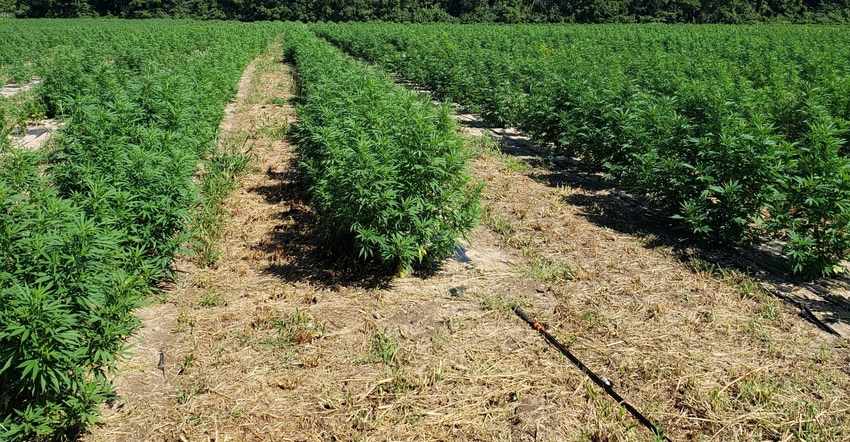January 19, 2021

The U.S. Department of Agriculture announced the final rule regulating the production of hemp in the United States. The final rule incorporates modifications to regulations established under the interim final rule published in October 2019. The modifications are based on public comments following the publication of the IFR and lessons learned during the 2020 growing season. The final rule is available for viewing in the Federal Register and will be effective on March 22, 2021.
“With the publication of this final rule, USDA brings to a close a full and transparent rule-making process that started with a hemp listening session in March 2019,” says USDA Marketing and Regulatory Programs Under Secretary Greg Ibach. “USDA staff have taken the information you have provided through three comment periods and from your experiences over a growing season to develop regulations that meet Congressional intent while providing a fair, consistent, science-based process for states, tribes and individual producers. USDA staff will continue to conduct education and outreach to help industry achieve compliance with the requirements.”
Key provisions of the final rule include:
Negligent violation – producers must dispose of plants that exceed the acceptable hemp THC level. However, if the plant tests at or below the negligent threshold stated in the rule, producer will not have committed a negligent violation. The final rule raises the negligence threshold from .5% to 1% and limits the maximum number of negligent violations that a producer can receive in a growing season (calendar year) to one.
Disposal and remediation of non-compliant plants – the final rule allows for alternative disposal methods for non-compliant plants that do not require using a DEA reverse distributor or law enforcement and expands the disposal and remediation measures available to producers. AMS will provide acceptable remediation techniques in a separate guidance document.
Testing using DEA-registered laboratories – there are an insufficient number of DEA-registered laboratories to test all the anticipated hemp that will be produced in 2020 and possibly 2021. DEA has agreed to extend the enforcement flexibility allowing non-DEA registered labs to test hemp until January 1, 2022 and is processing lab registration applications quickly to get more labs testing hemp DEA-registered.
Timing of sample collection – the IFR stated a 15-day window to collect samples before harvest. The FR extends this requirement to 30 days before harvest.
Sampling method – stakeholders requested that samples may be taken from a greater part of the plant or the entire plant. They also requested sampling from a smaller number of plants. The FR allow states and tribes to adopt a performance-based approach to sampling in their plans. The plan must be submitted to USDA for approval. It may take into consideration state seed certification programs, history of producer compliance and other factors determined by the State or Tribe.
Extent of Tribal Regulatory Authority over the Territory of the Indian Tribe – the IFR did not specifically address whether a tribe with an approved USDA plan could exercise primary regulatory authority over the production of hemp across all its territory or only lands over which it has inherent jurisdiction. The final rule provides that a tribe may exercise jurisdiction and therefore regulatory authority over the production of hemp throughout its territory regardless of the extent of its inherent regulatory authority.
On Oct. 31, 2019, USDA published the IFR that provided specific details on the process and criteria for review of plans USDA receives from states and Indian tribes regarding the production of hemp and established a plan to monitor and regulate the production of hemp in those states or Indian tribes that do not have an approved state or Tribal plan.
The IFR was effective immediately after publication in the Federal Register and provided a 60-day public comment period. On Dec. 17, 2019, USDA extended the comment period until Jan. 29, 2020, to allow stakeholders additional time to provide feedback. USDA re-opened the comment period for 30 days, from Sept. 8 to Oct. 8, 2020 seeking additional comments from all stakeholders, especially those who were subject to the regulatory requirements of the IFR during the 2020 production cycle. In all, USDA received about 5,900 comments.
On Feb. 27, 2020, USDA announced the delay of enforcement of the requirement for labs to be registered by the Drug Enforcement Administration (DEA) and the requirement that producers use a DEA-registered reverse distributor or law enforcement to dispose of non-compliant plants under certain circumstances until Oct. 31, 2021, or the final rule is published, whichever comes first. This delay has been further extended in the final rule to December 2022.
The Agriculture Improvement Act of 2018 (2018 Farm Bill) directed USDA to issue regulations and guidance to implement a program for the commercial production of hemp in the United States. The authority for hemp production provided in the 2014 Farm Bill was extended until January 1, 2022, by the Continuing Appropriations Act, 2021, and Other Extensions Act (Pub. L. 116-260) (2021 Continuing Appropriations Act) allowing states and institutions of higher education to continue to grow or cultivate industrial hemp at certified and registered locations within the state for research and education purposes under the authorities of the 2014 Farm Bill.
More information about the provisions of the final rule is available on the Hemp Production web page on the Agricultural Marketing Service (AMS) website.
You May Also Like




